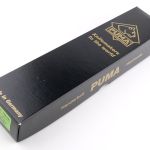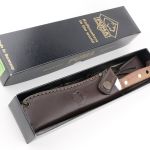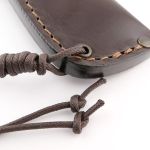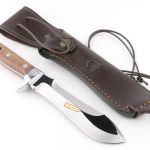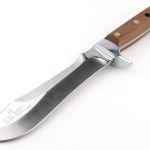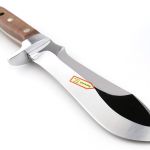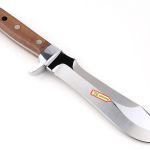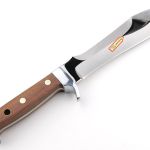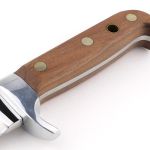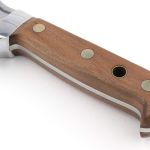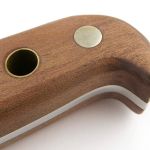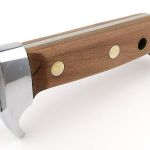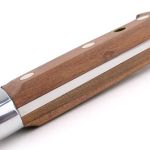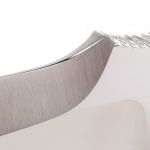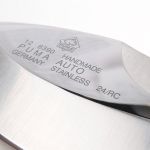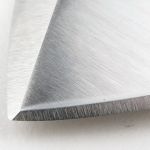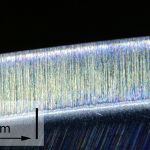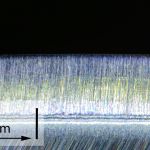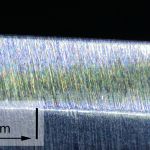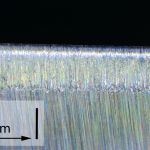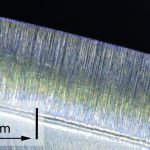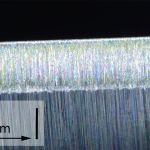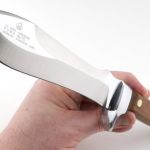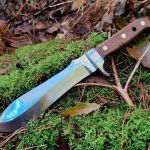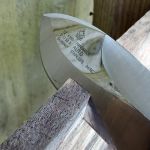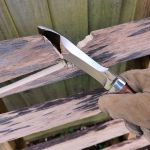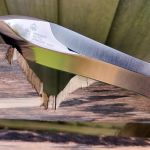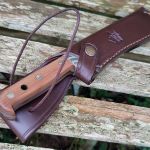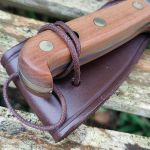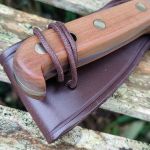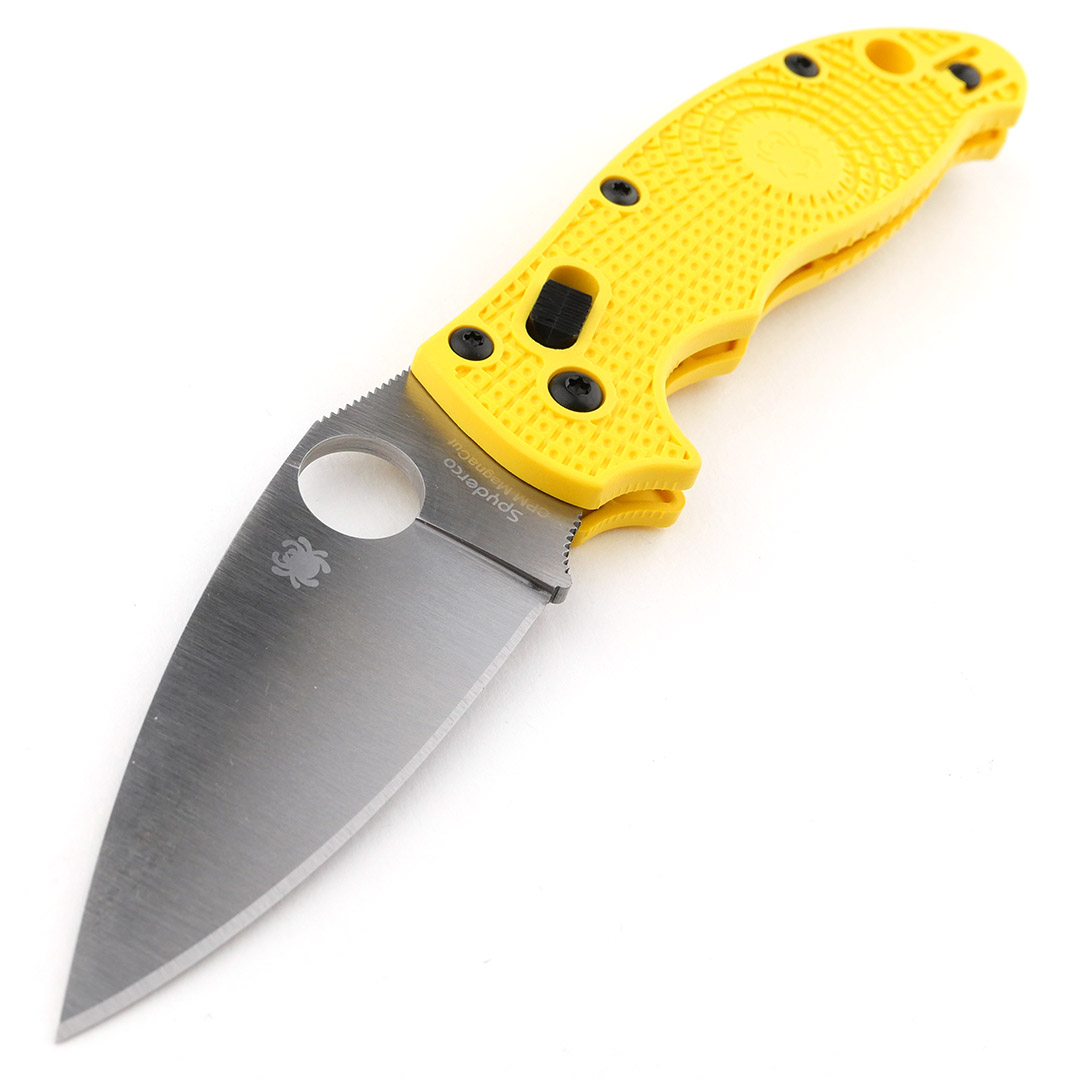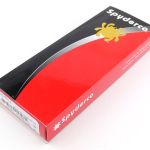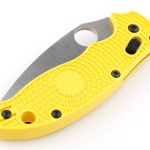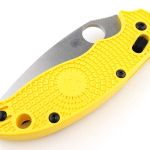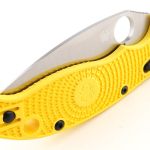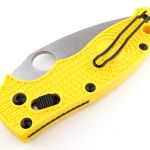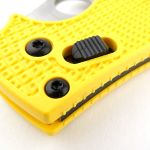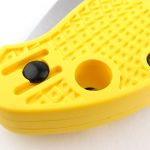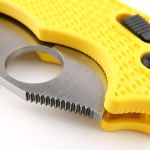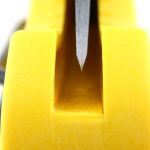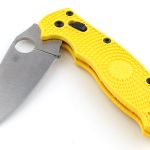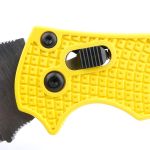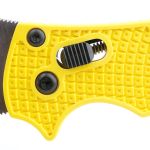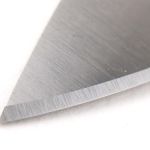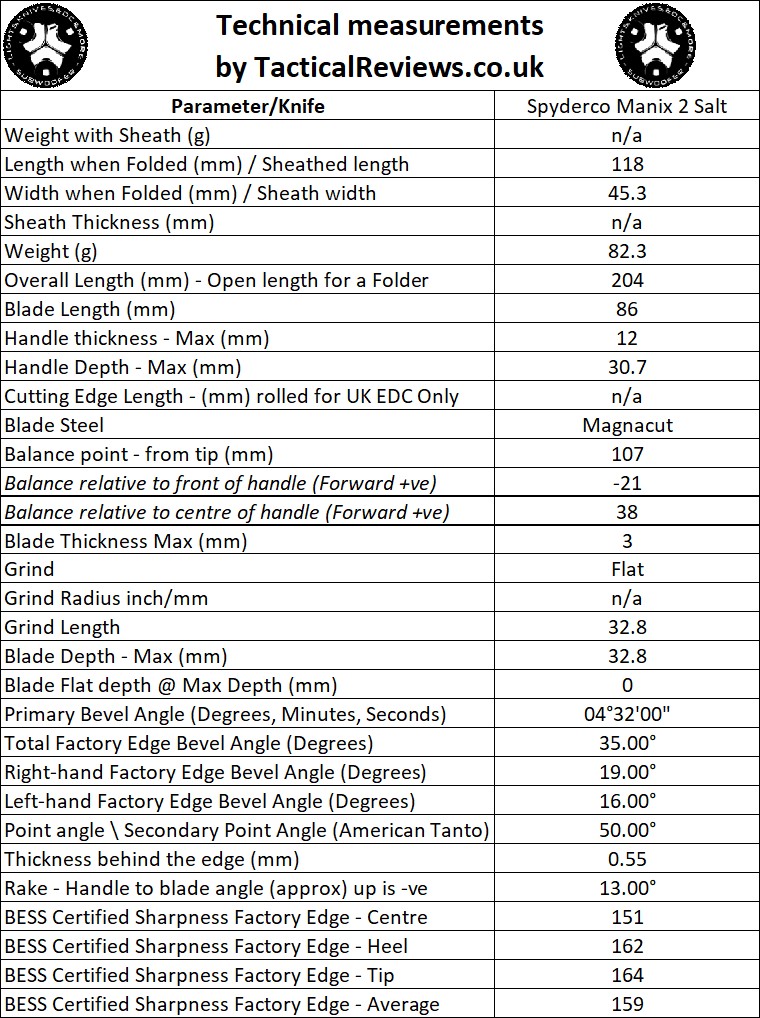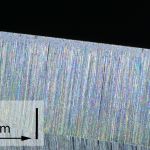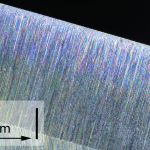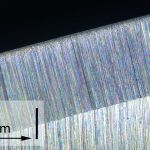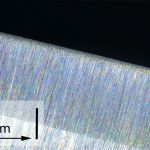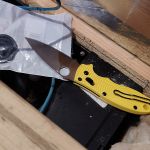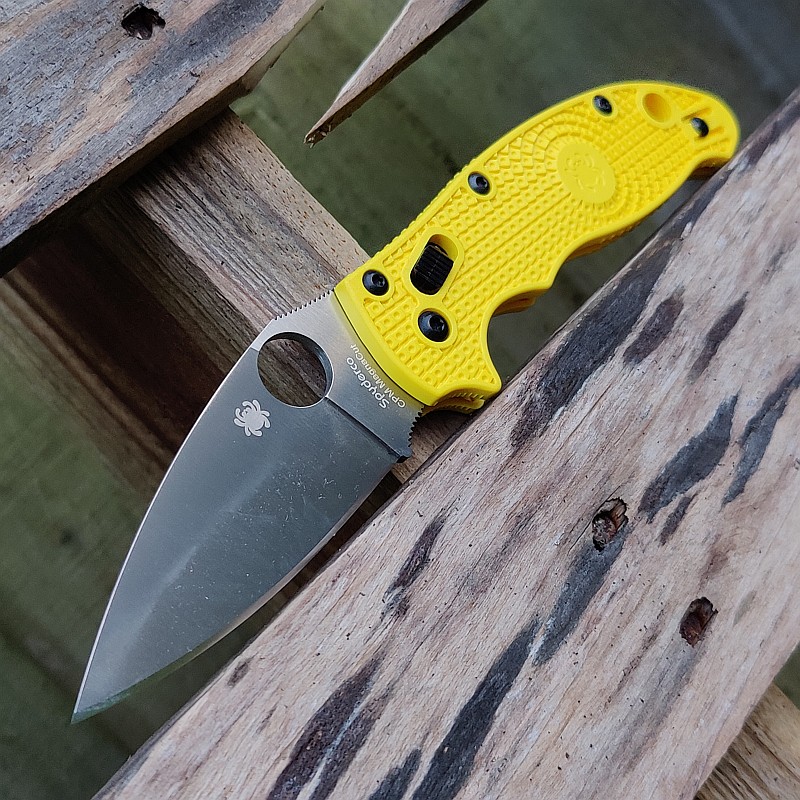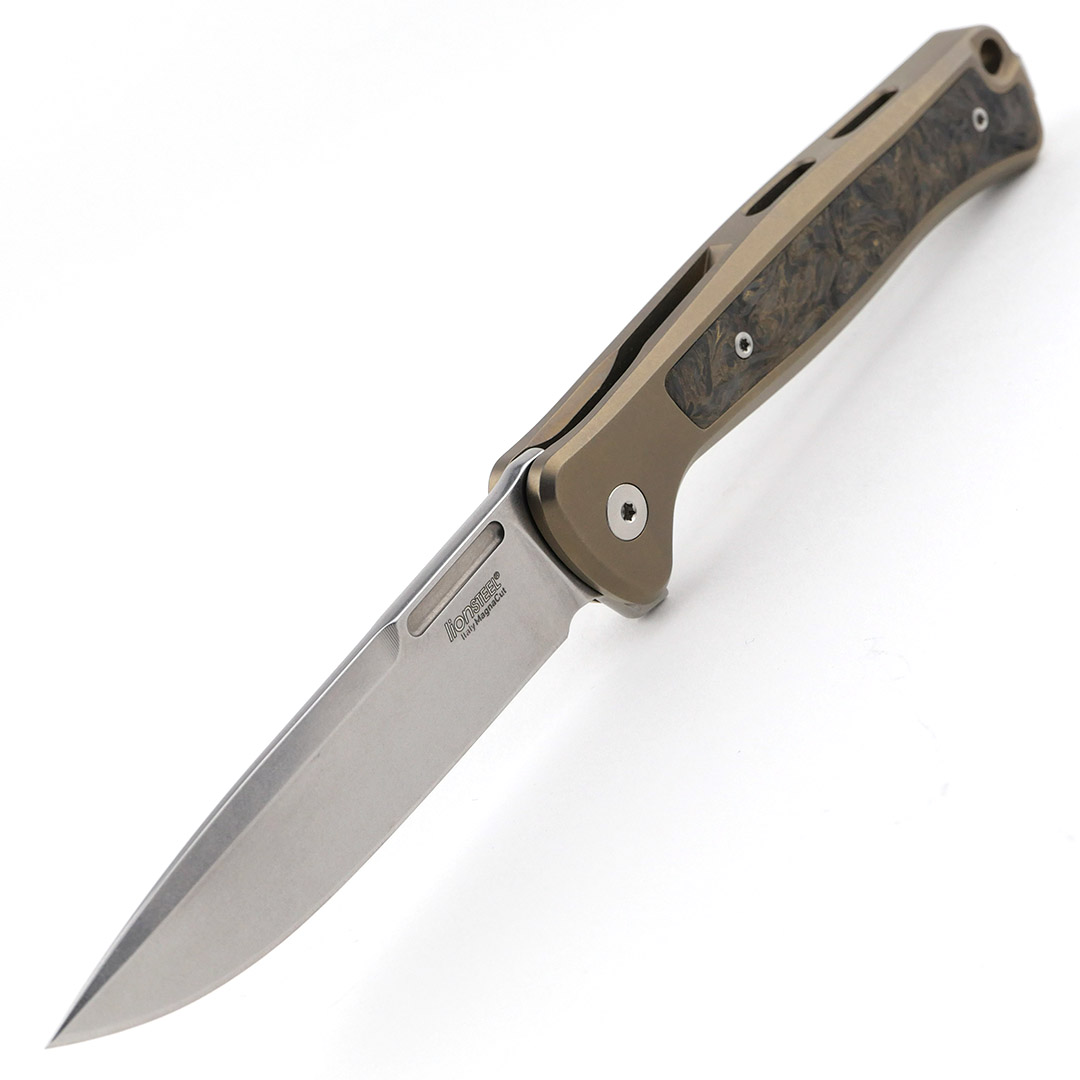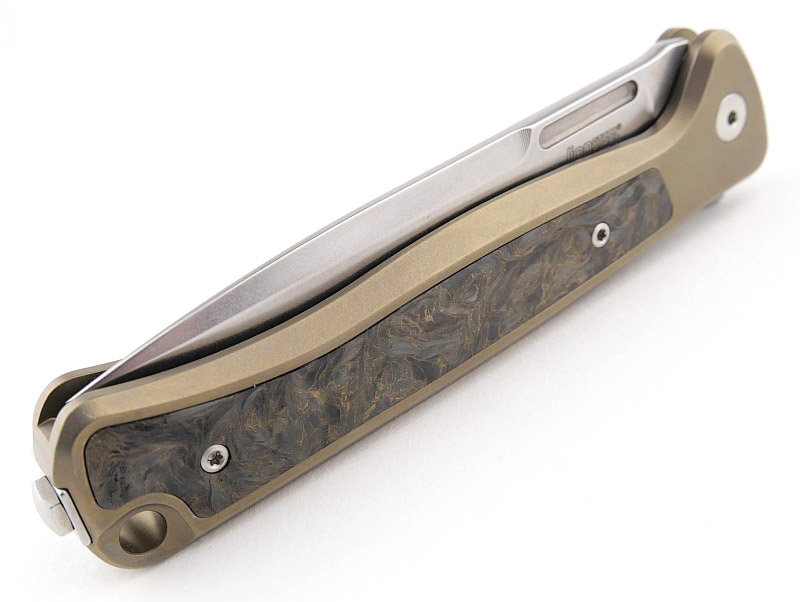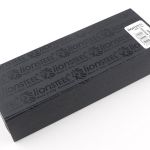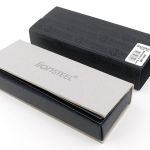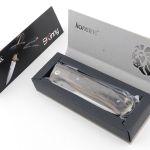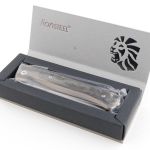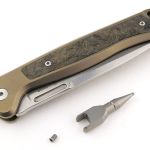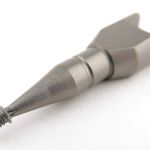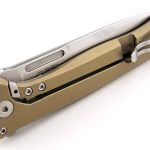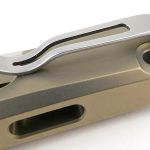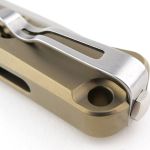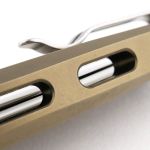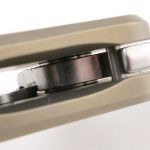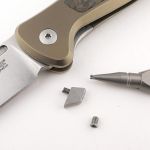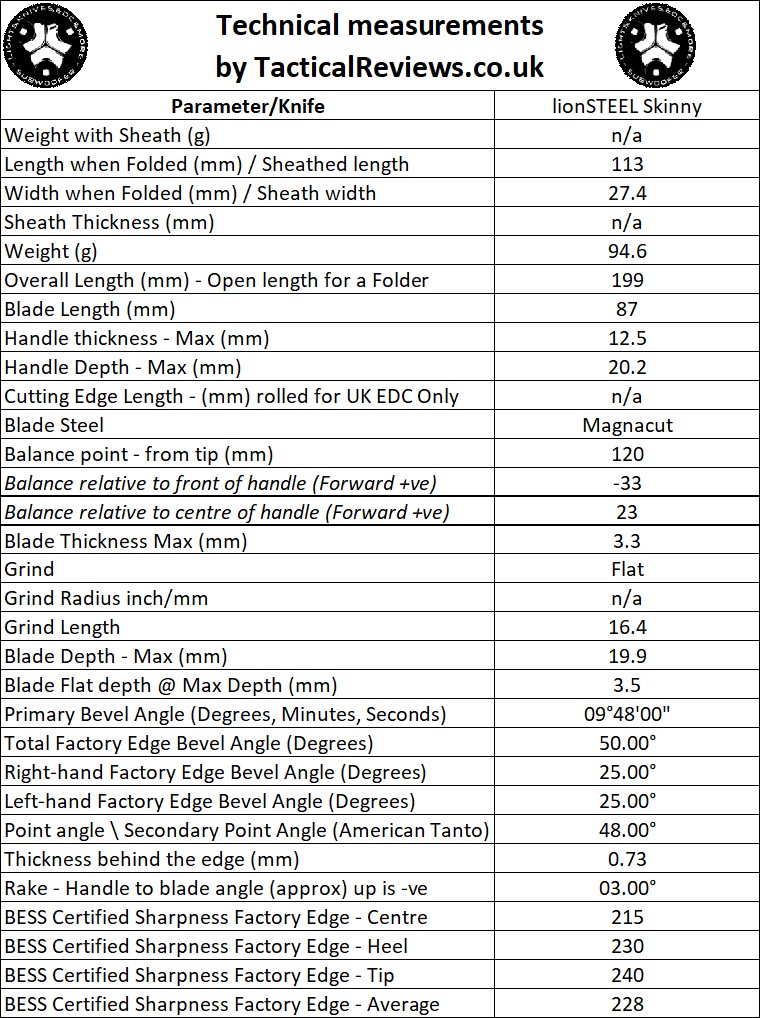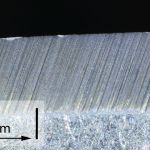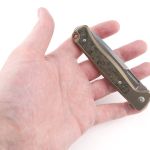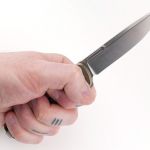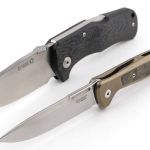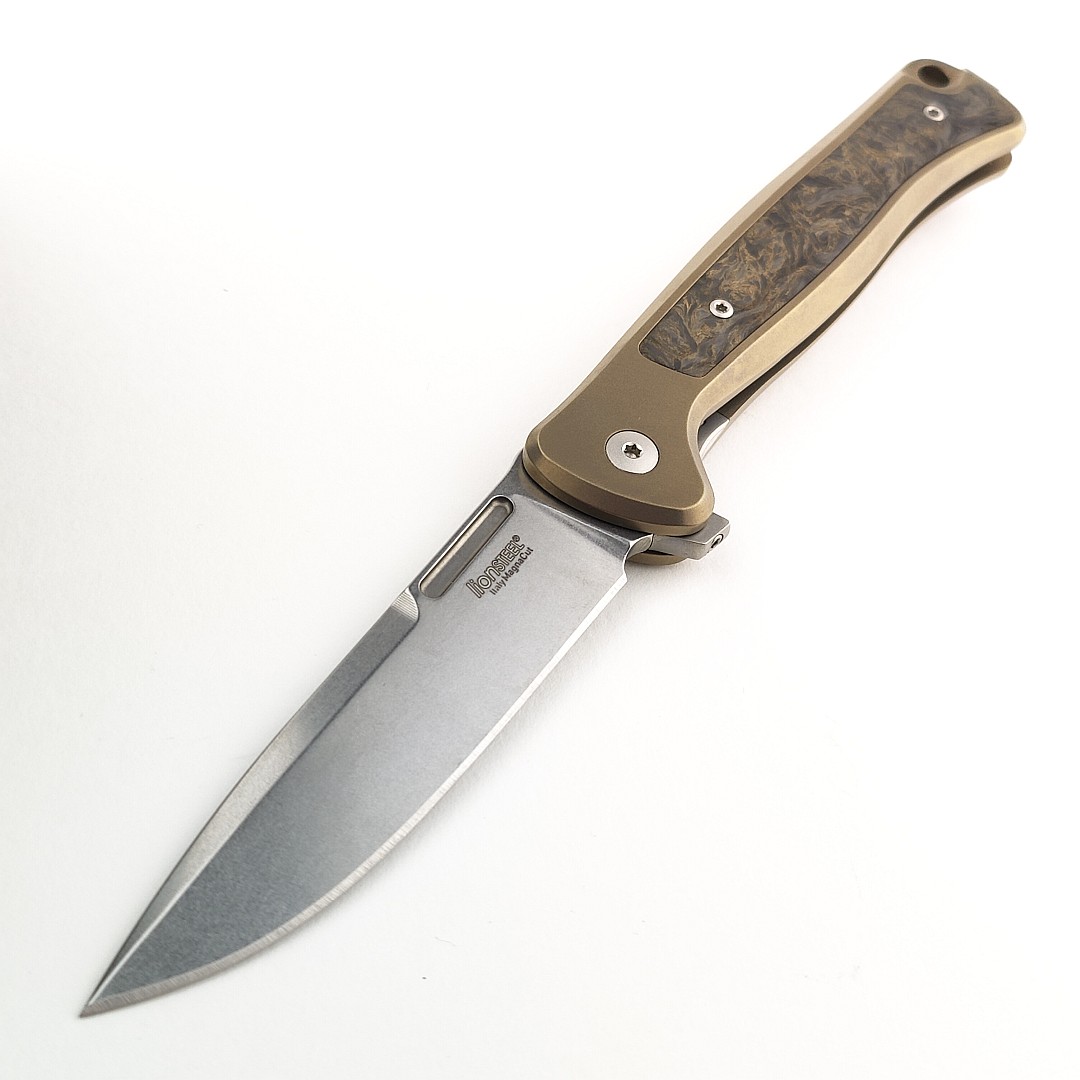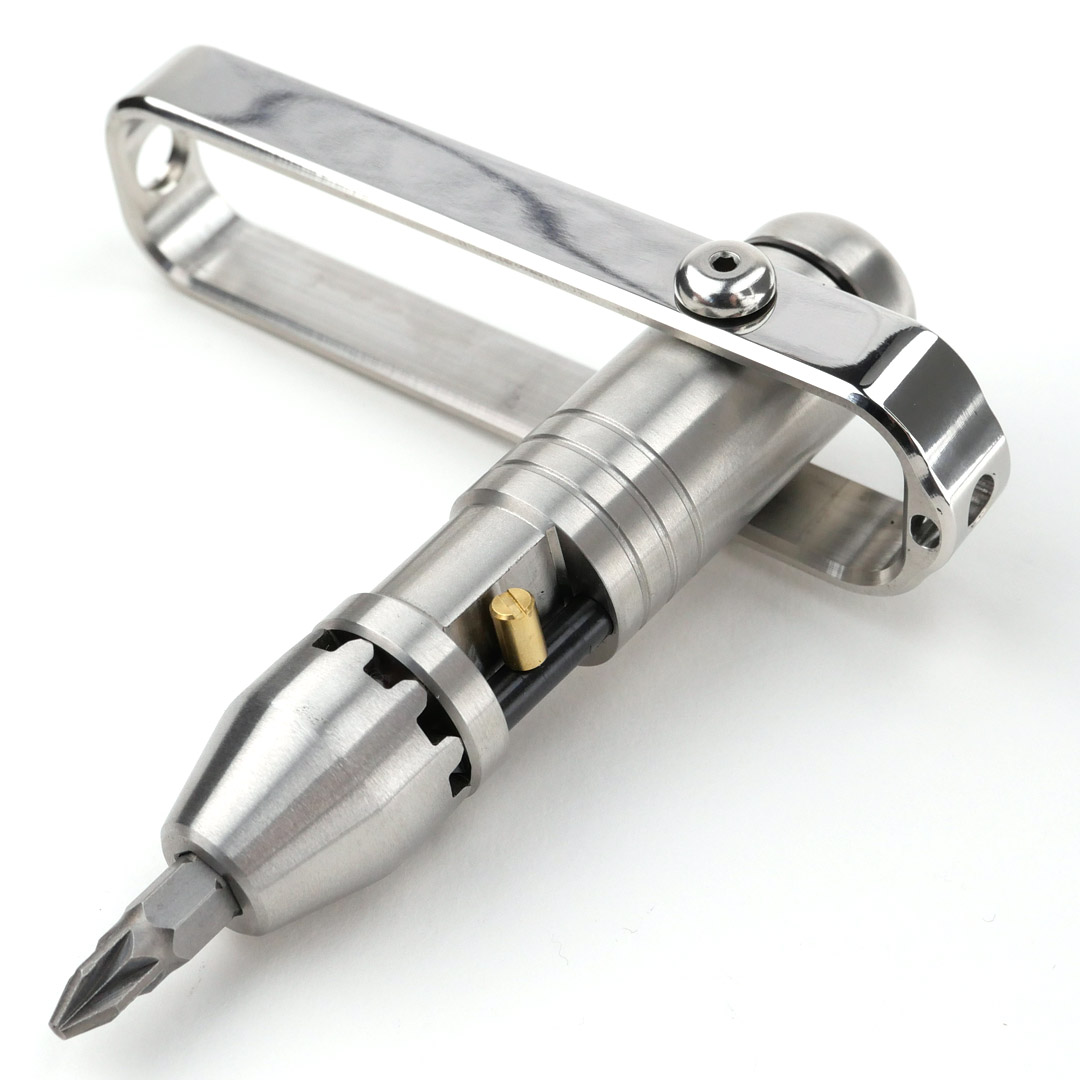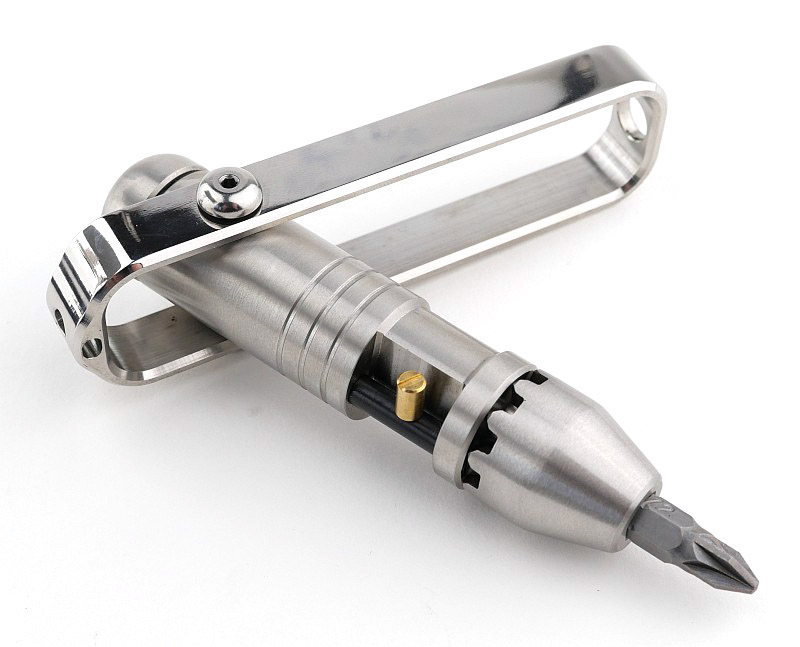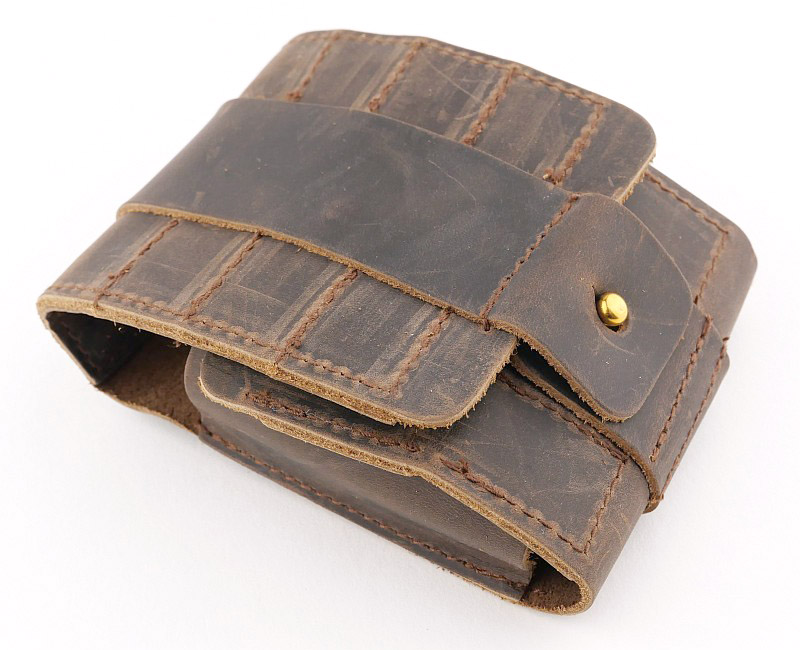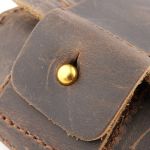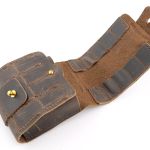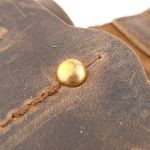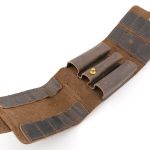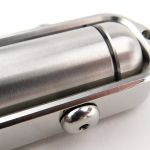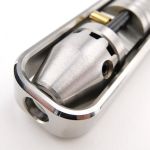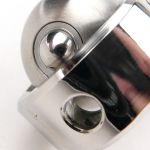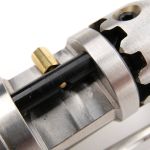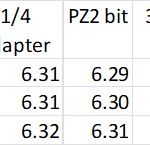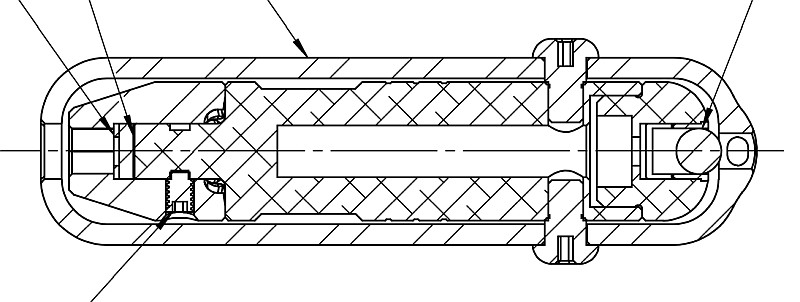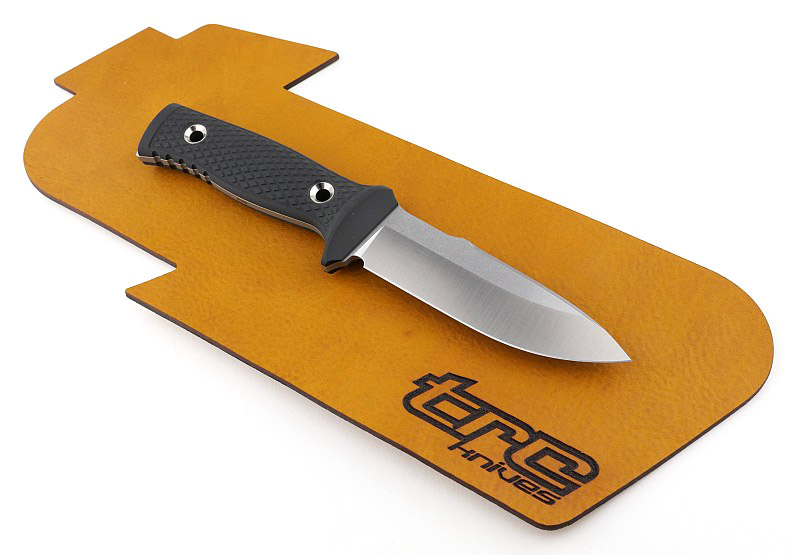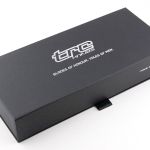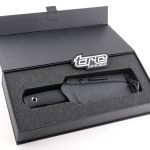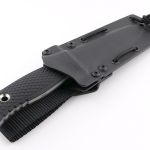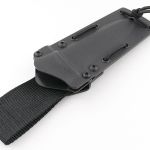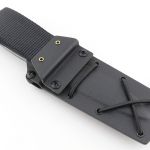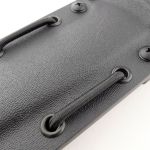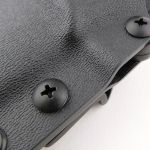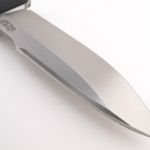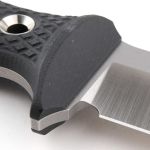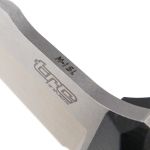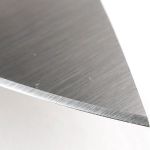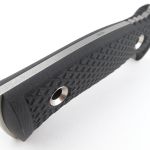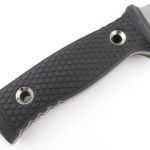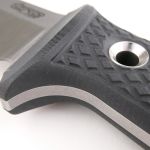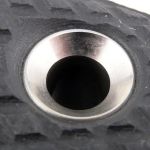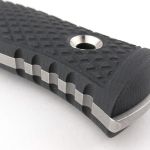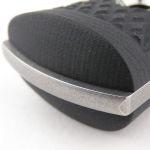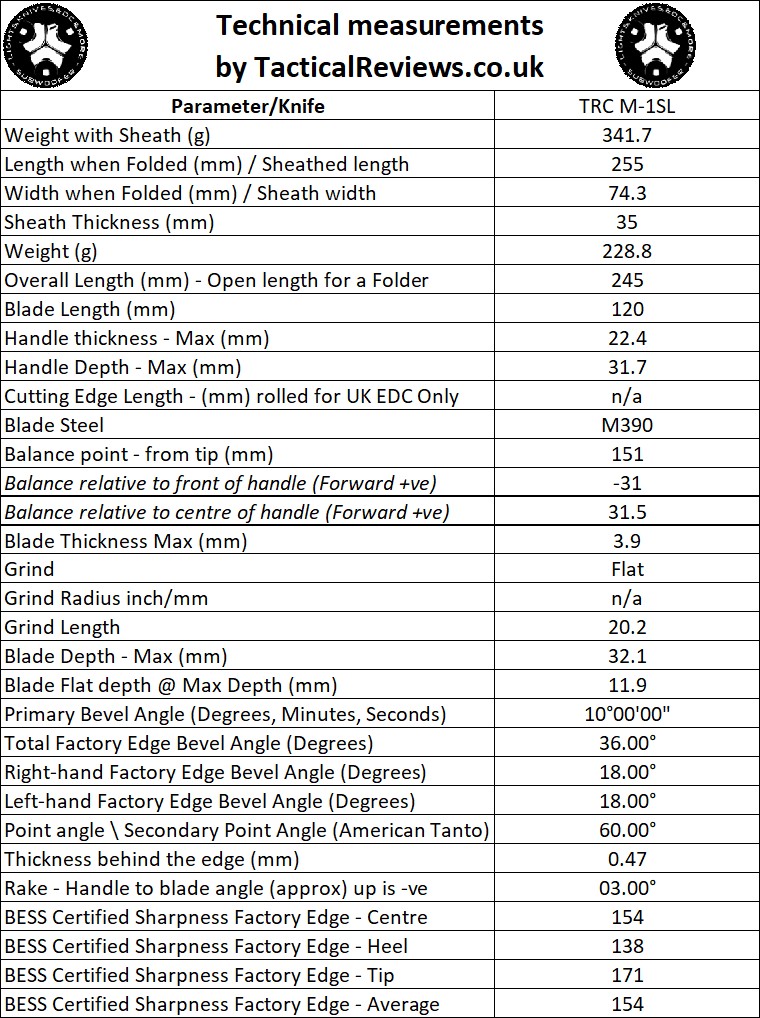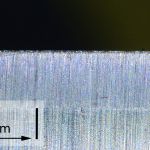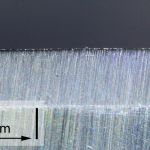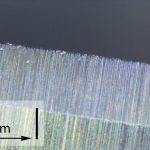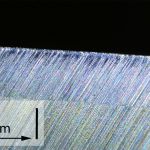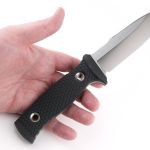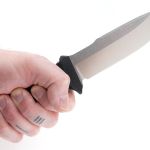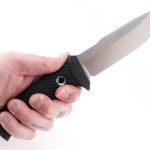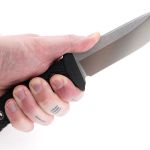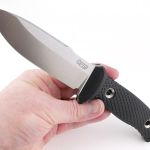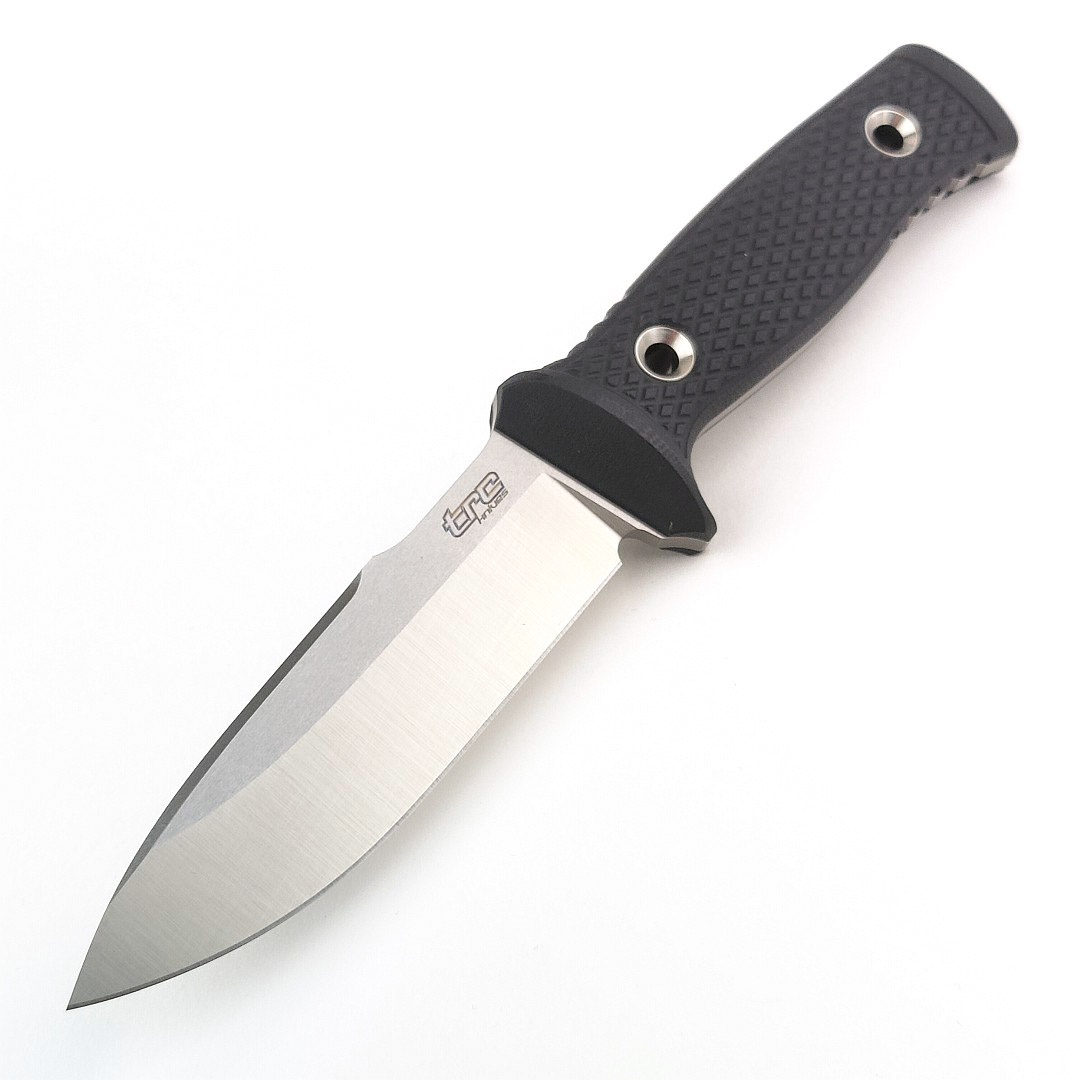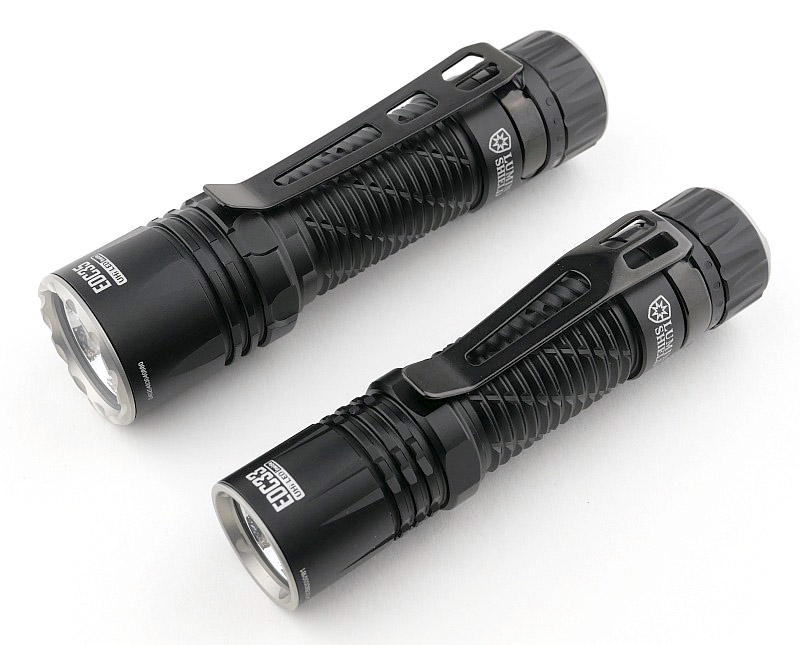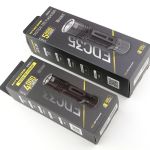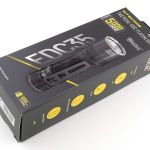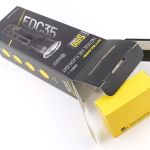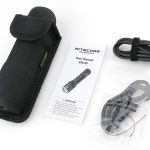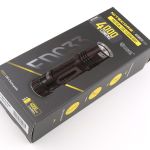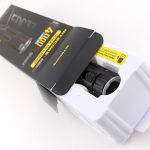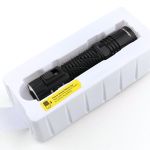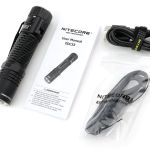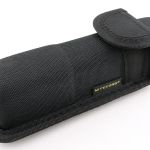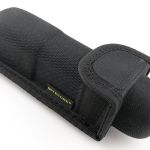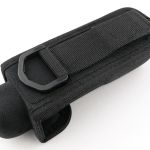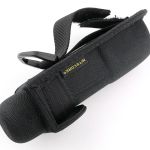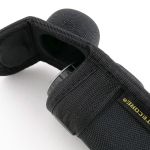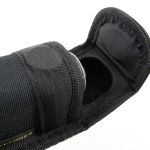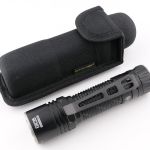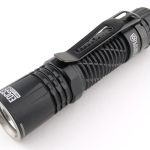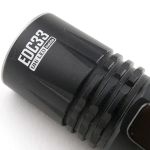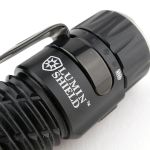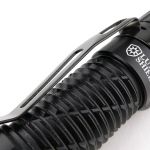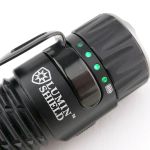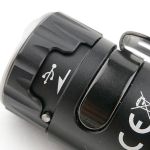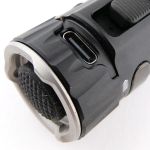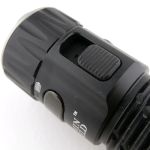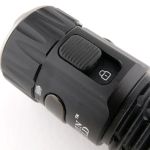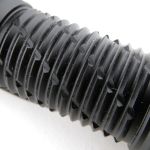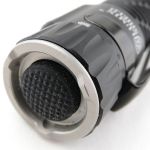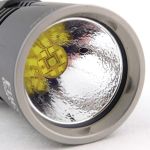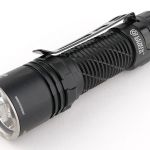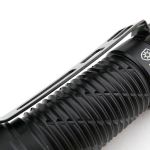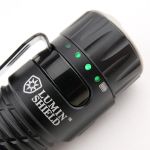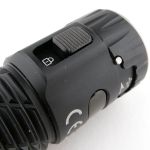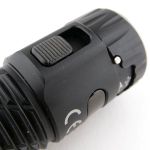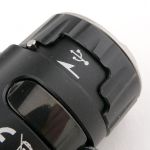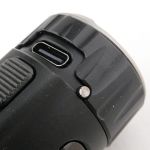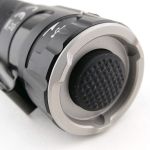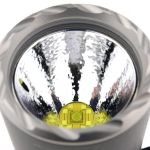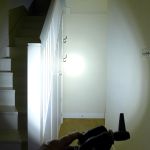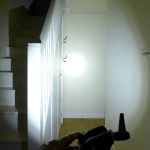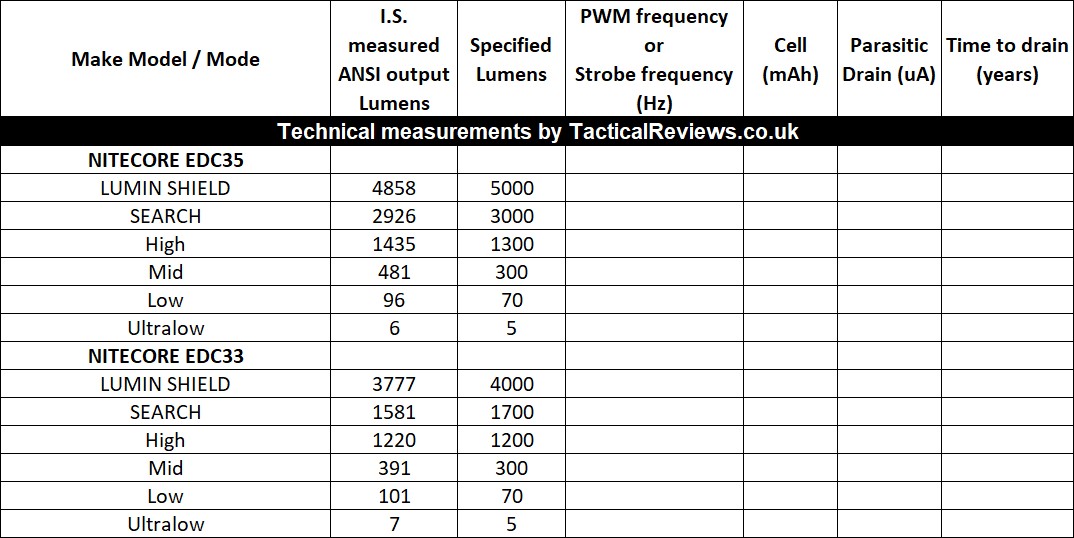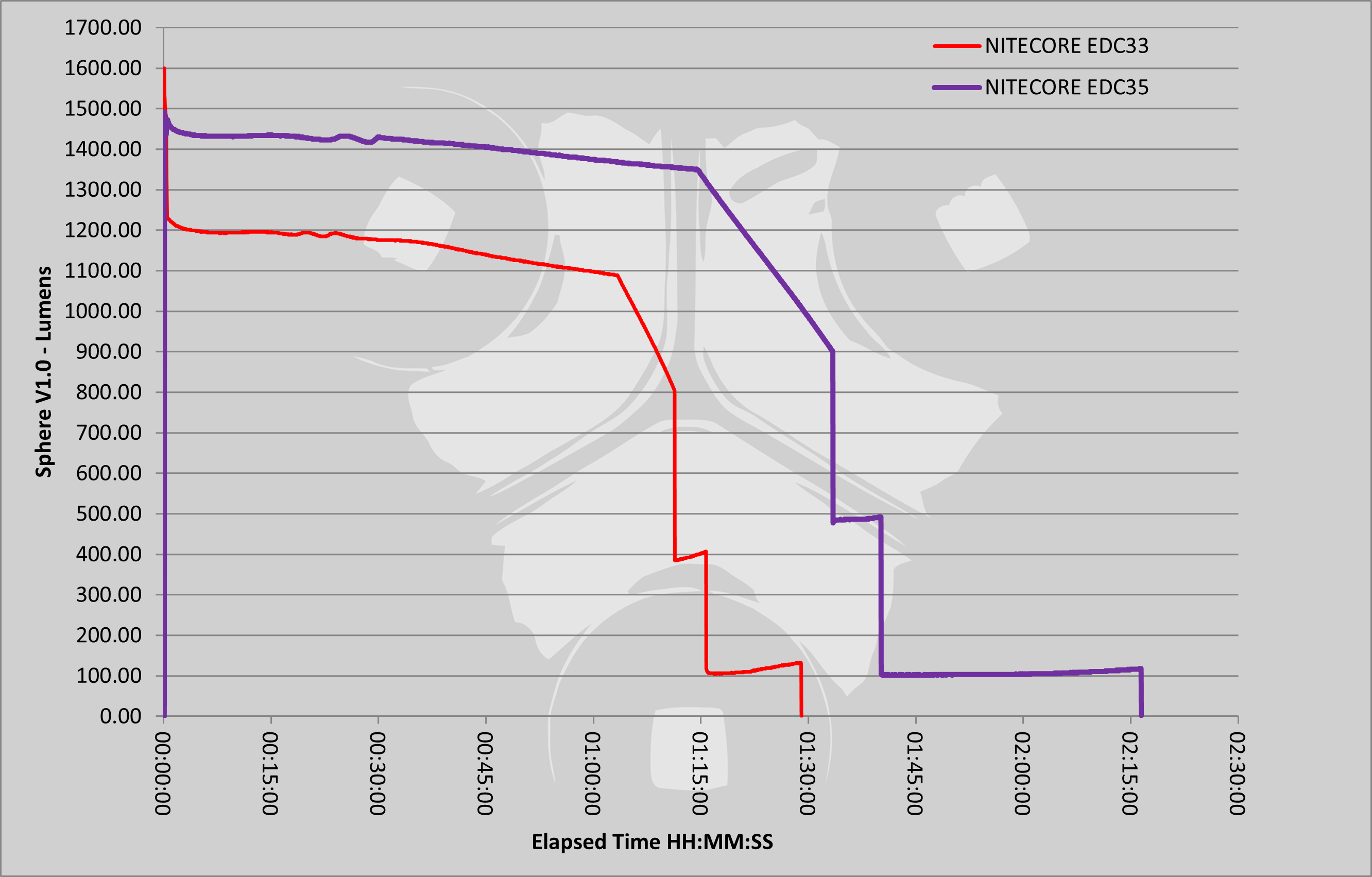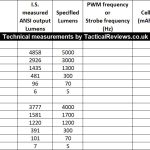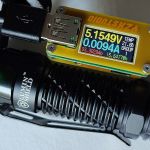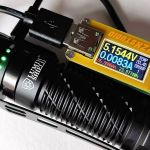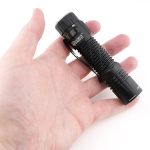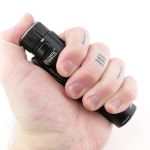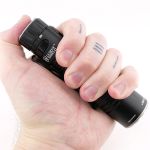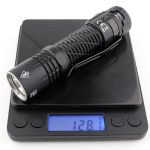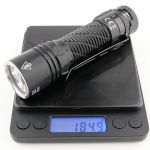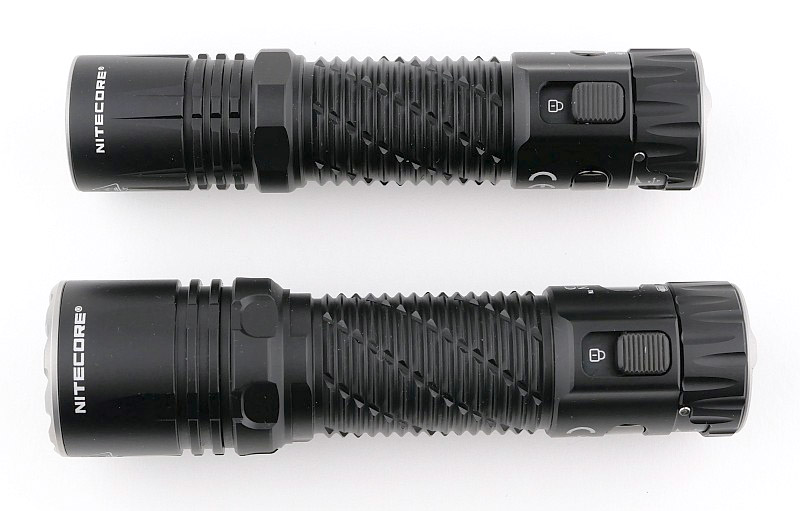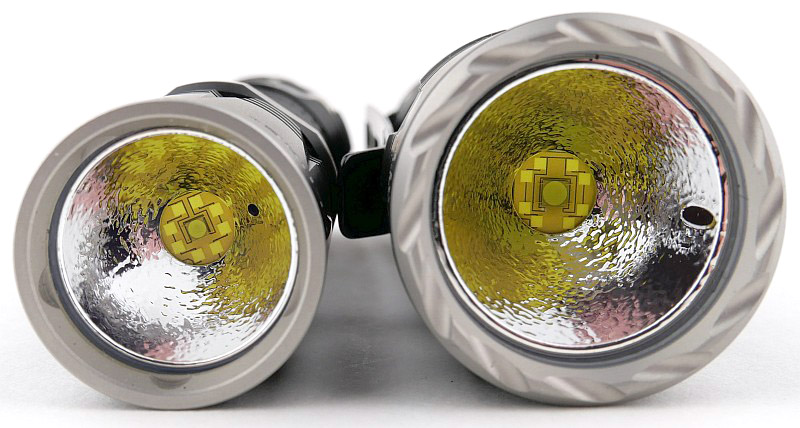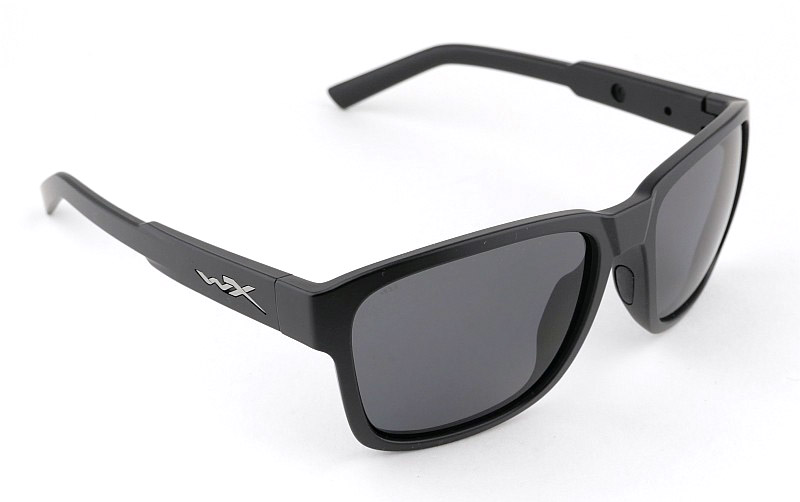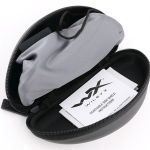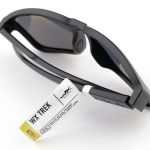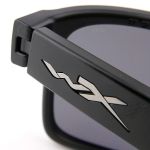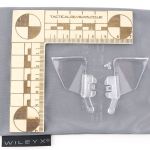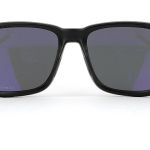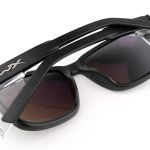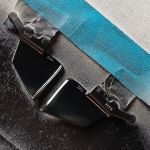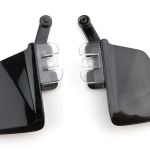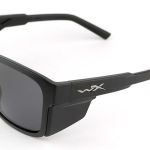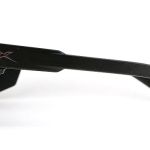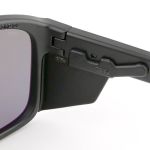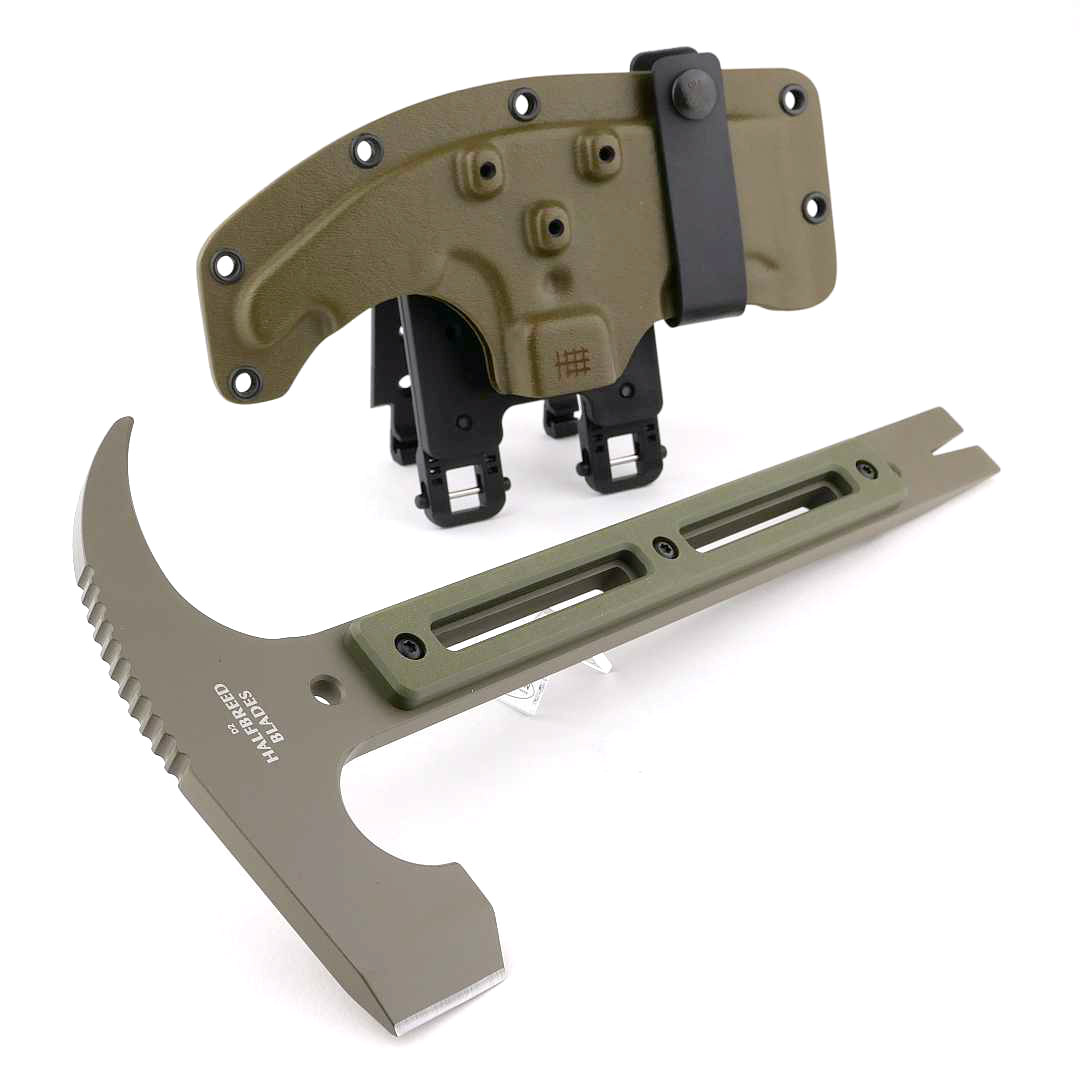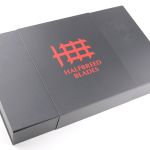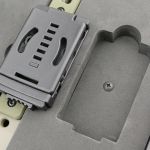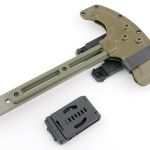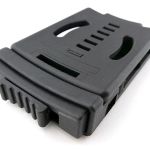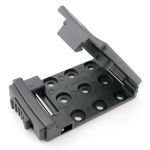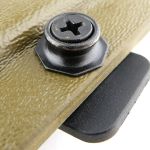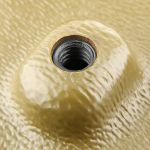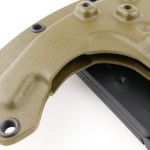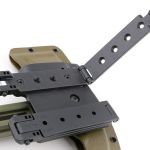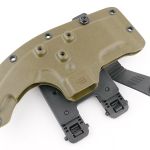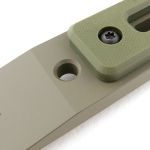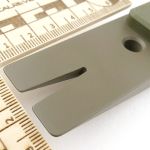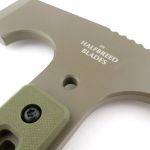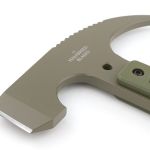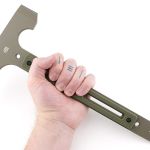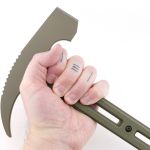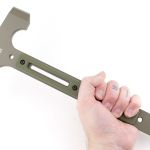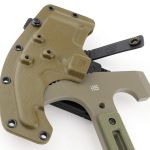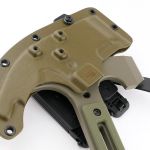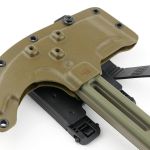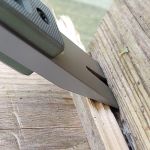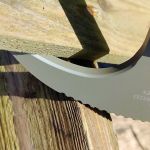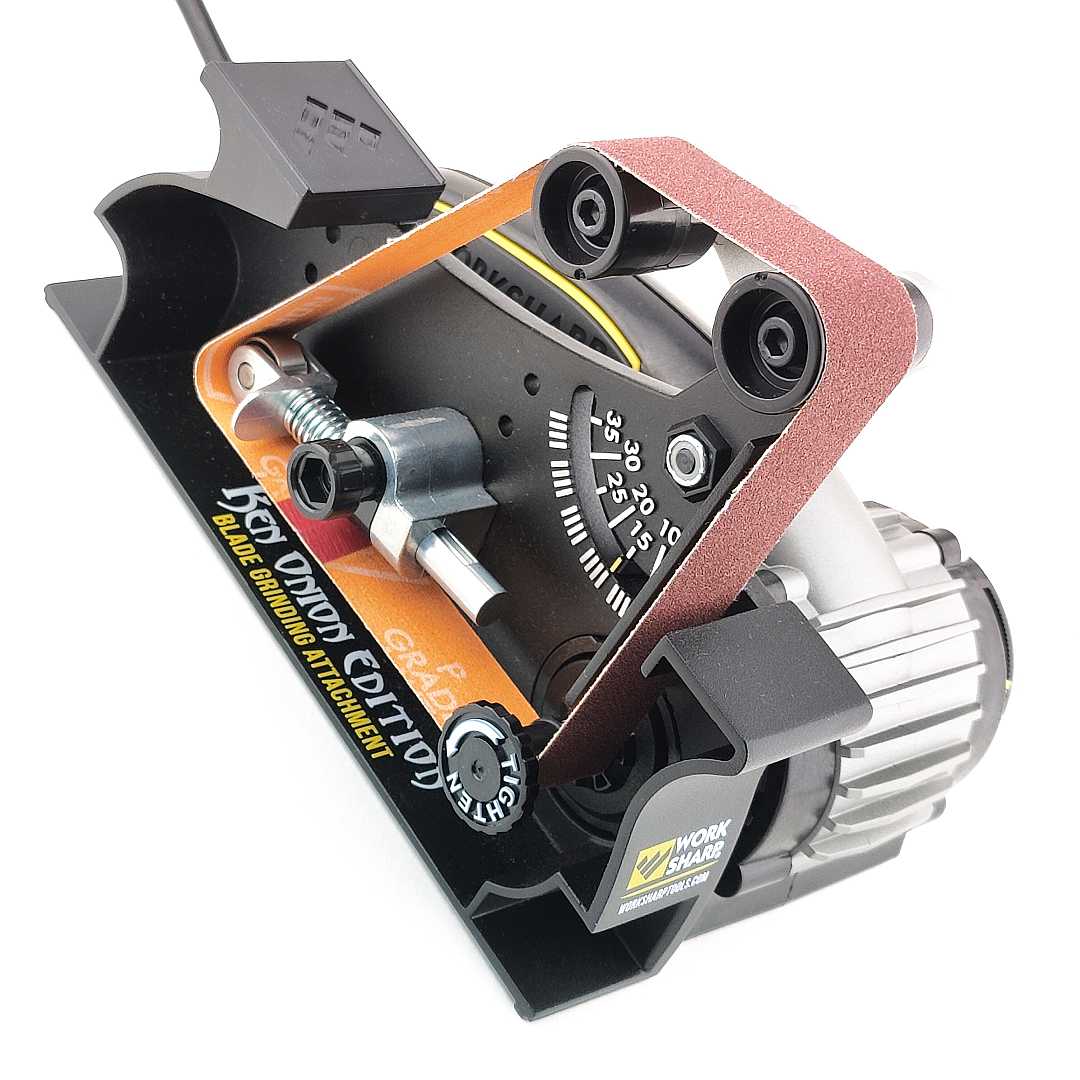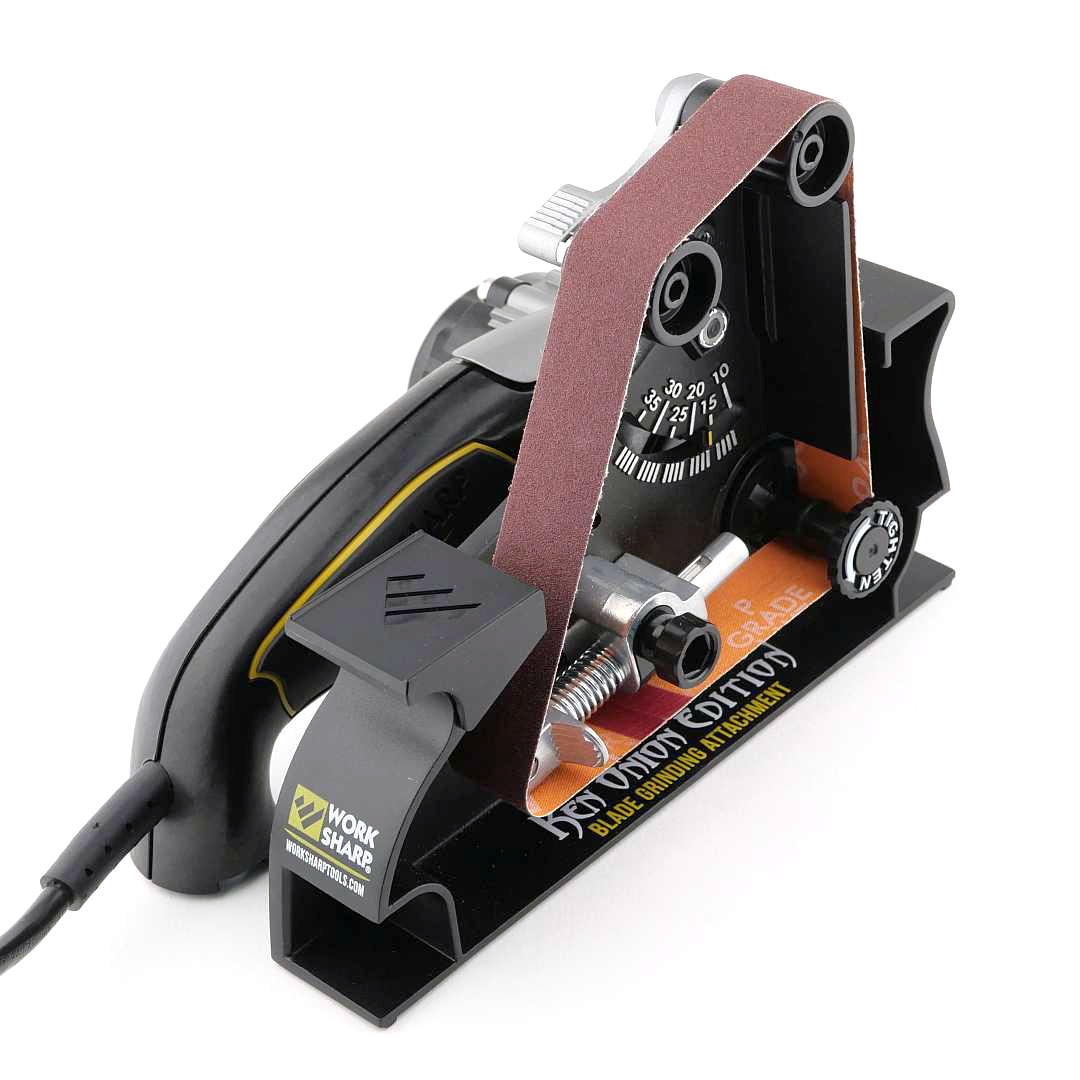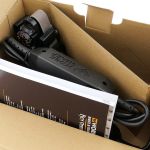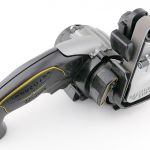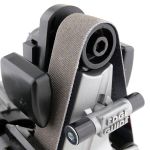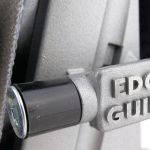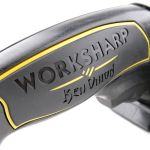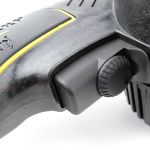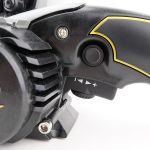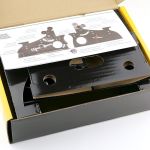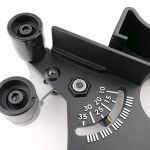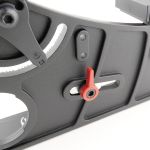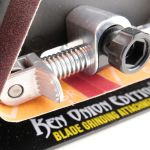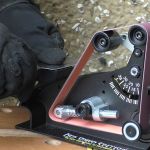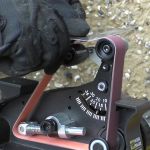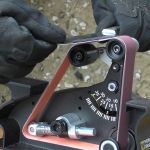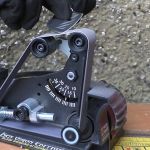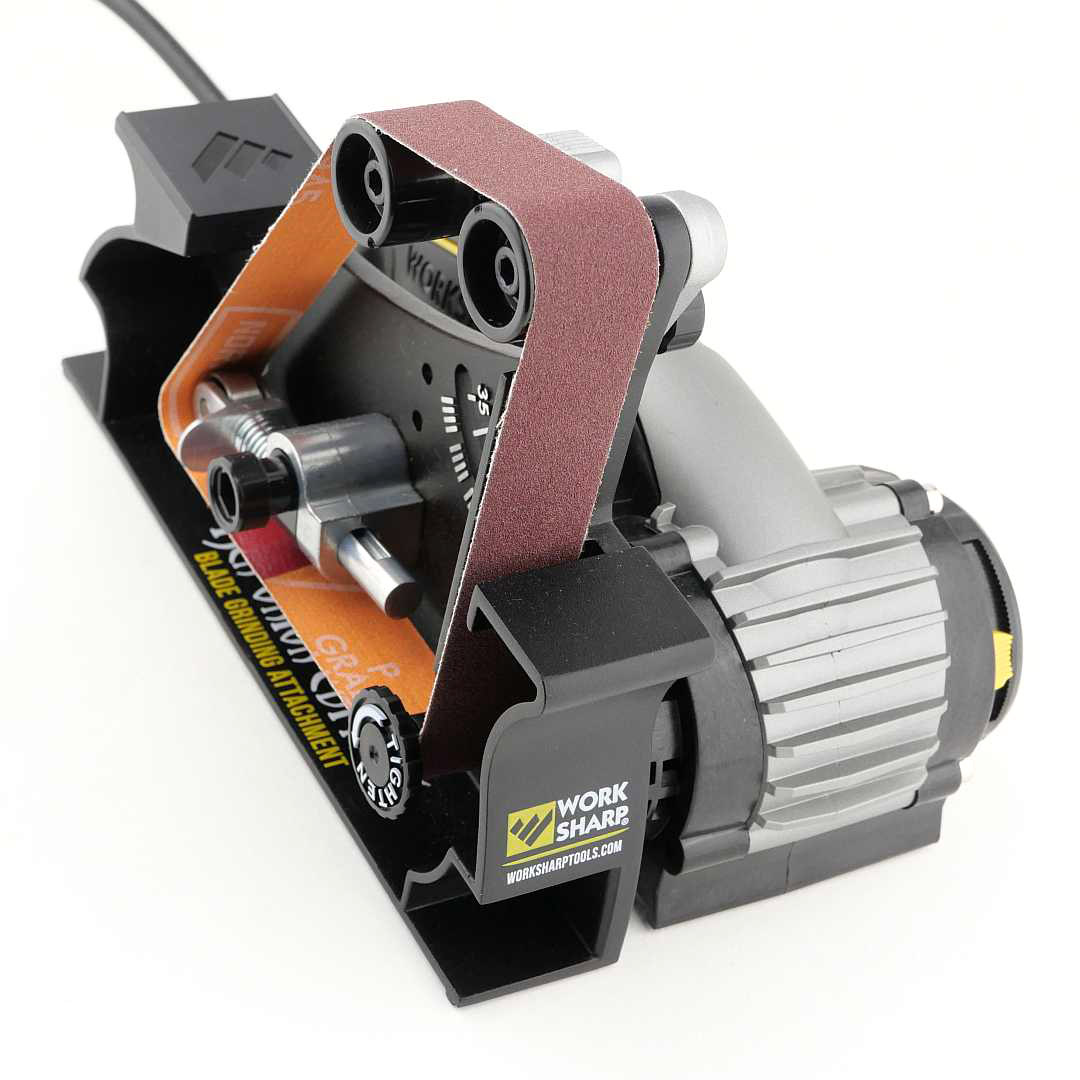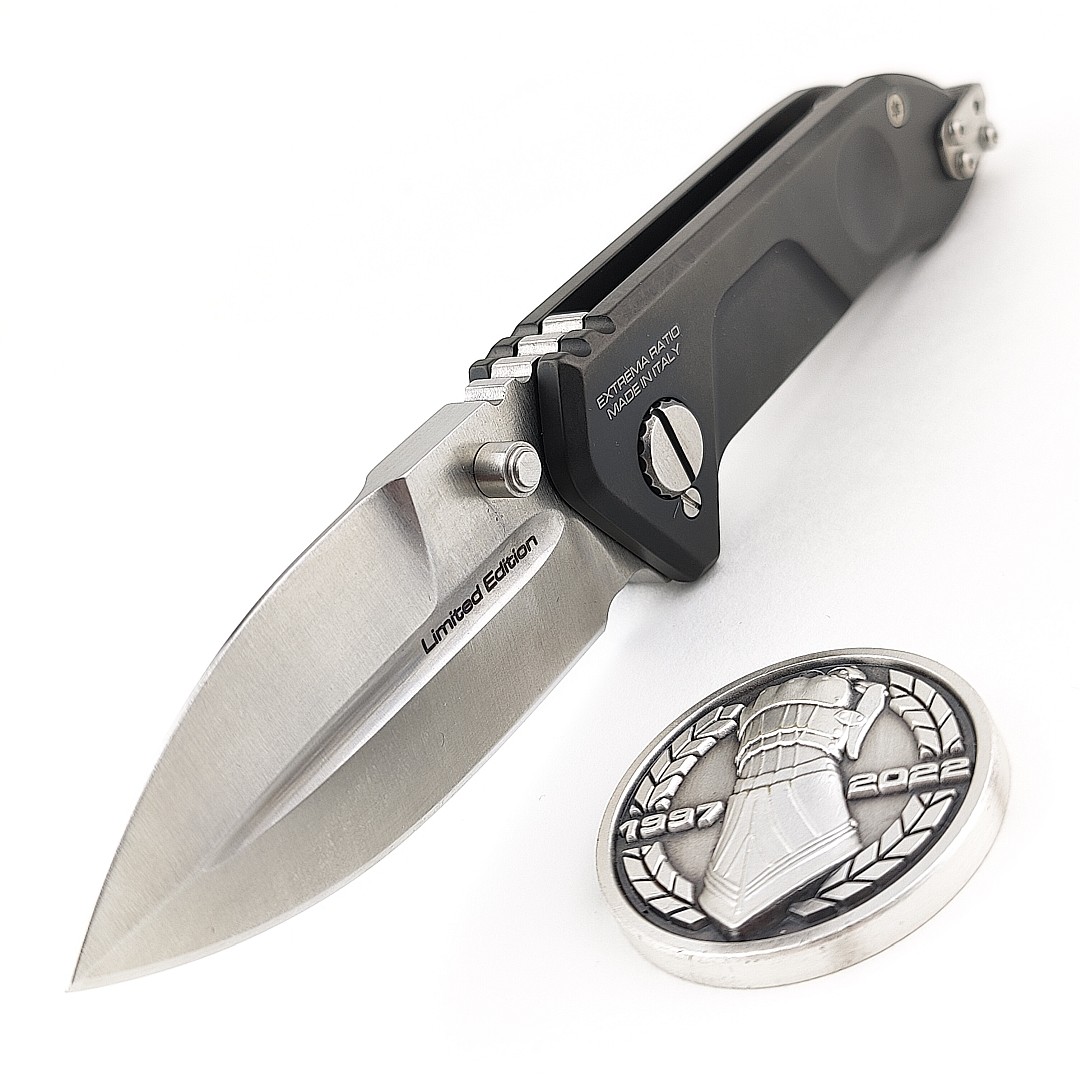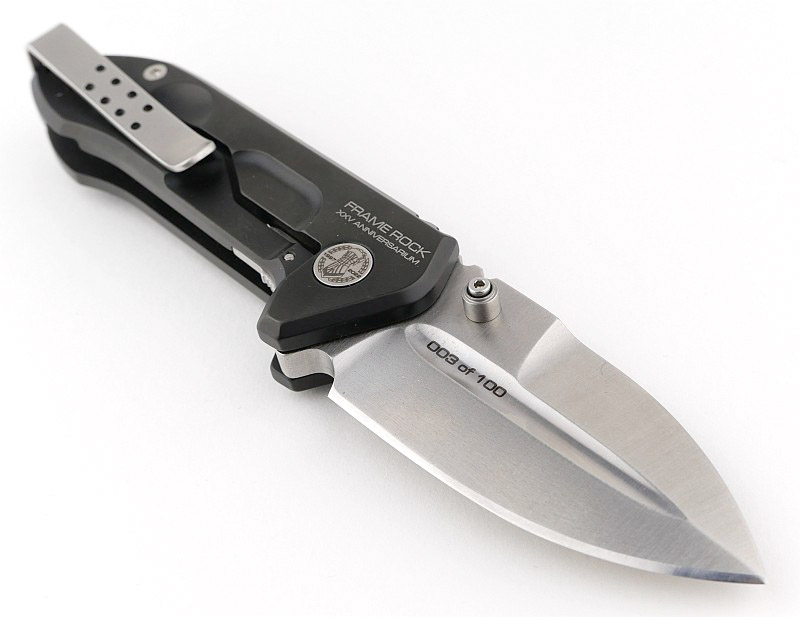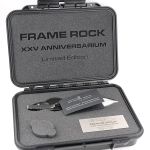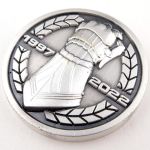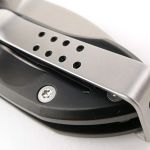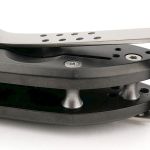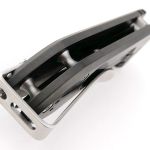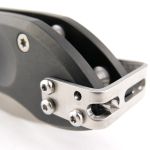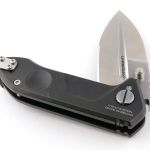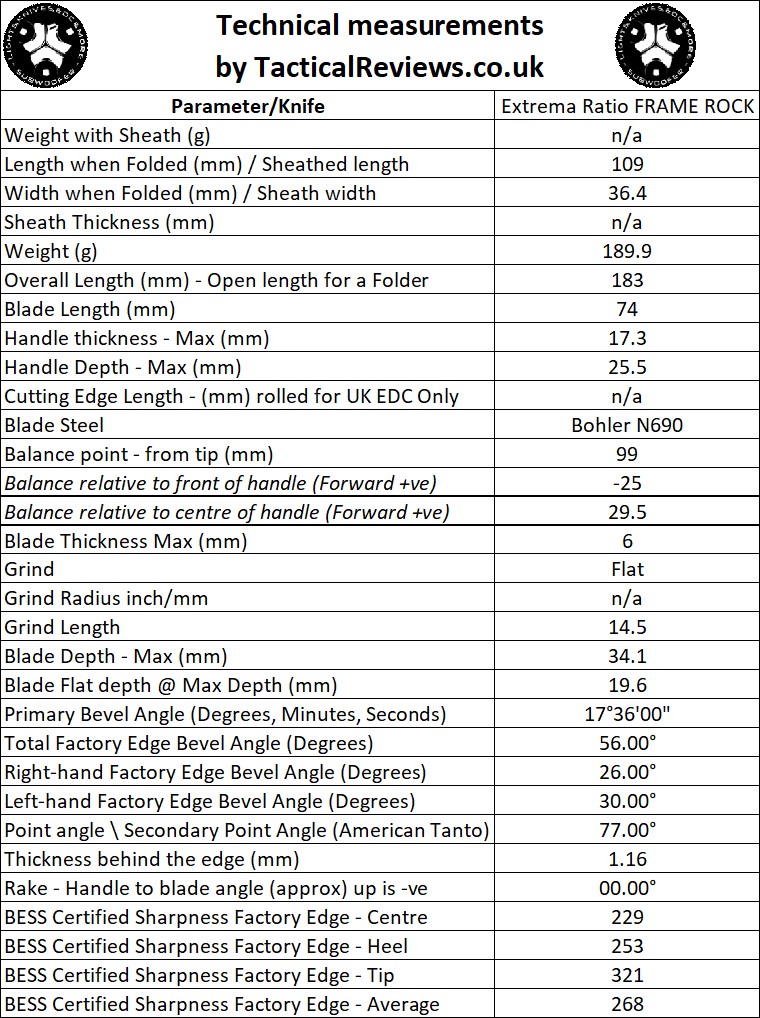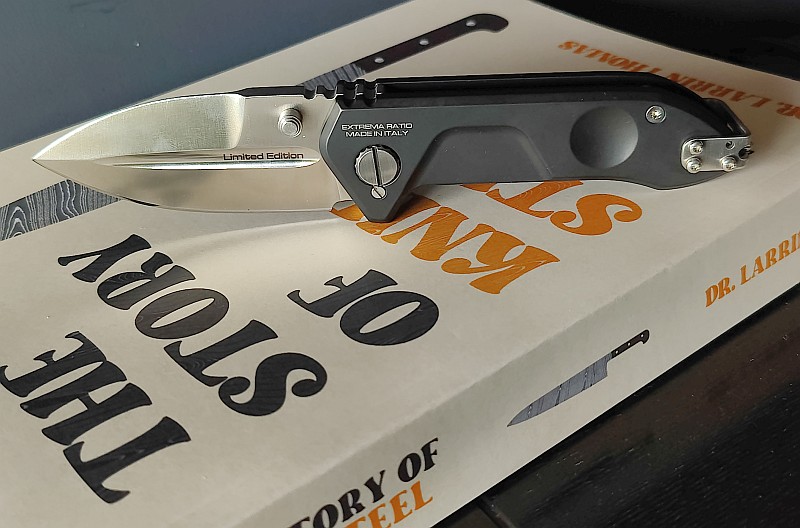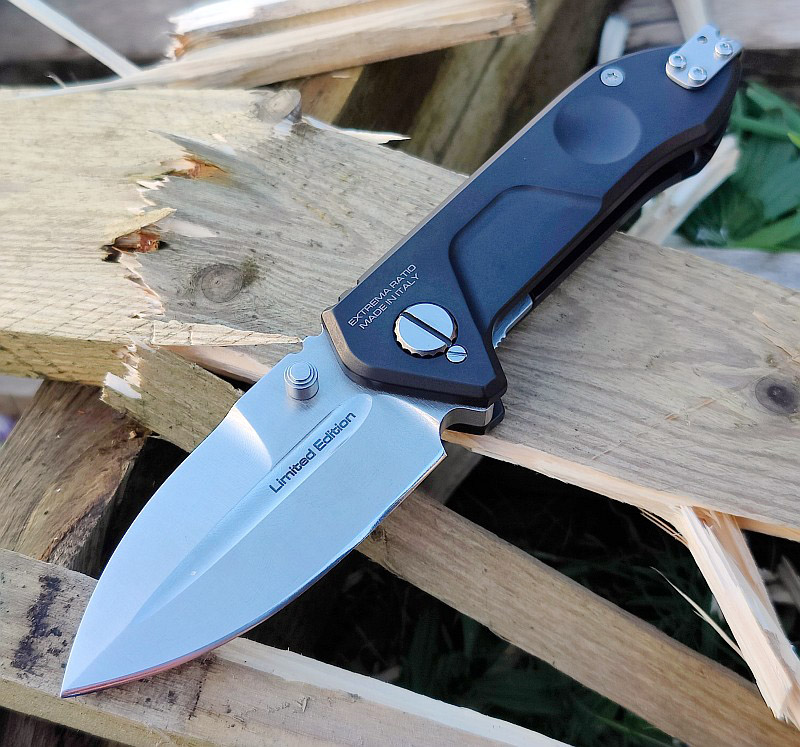Now with a 2024 update, this is a look at a classic design dating back to 1956. Join me in a detailed review of the Puma “Automesser” model; but not quite as you know it, this is a new variant first made available in 2024. The Automesser model is a classic knife that has been proving capable of withstanding the most demanding use for over 60 years. Basically the same knife as Puma’s White Hunter (which was created in 1956), the Automesser uses the same blade but has a wooden handle and was introduced in the 1960s.
Despite loving them, there was always one small detail that prevented me embracing them fully – the gristle saw. After discussions with Puma, I’m thrilled to announce that this has now been updated as an option so you can choose! In this new variant, you can opt to have a full plain edge instead of having to have the gristle saw which has always been positioned at the exact point I most want a plain edge for precise carving and cutting.
The blade shape is carefully thought out to be capable of a wide range of tasks. The sturdy tip is robust enough to open cans or pry open crown bottle caps. A hatchet edge is ground into the back of the blade for rough work such as splitting firewood or chopping bones. The “Automesser” is equipped with plum wood scales, which are firmly riveted to the full tang, and this classic model is just as relevant today as it was when first produced.

What’s in the box?:
This exact knife was the first Automesser without the gristle saw so has been to various exhibitions, the last being IWA 2024. I believe this is the full normal presentation, but it is possible you might see something slightly different.
The sheathed Automesser is accompanied by a certification leaflet.
In the last photo in this gallery I have placed a White Hunter promotional paper flier, in the exact (and to scale) outline of this original model, to show the direct relation of the two models that share the same blade.
A good look round the Automesser Sheath – Things to look out for here are:
A classic leather sheath for a classic knife. The Automesser sheath has an unusual waisted design, gently following the shape of the blade. A braided leg tie cord is included and is fitted through a hollow rivet. Rivets are used to further strengthen the ends of the heavy duty stitching. Overall the sheath is constructed from a single piece of leather, but does include welts in the main part of the sheath for shaping and to protect the stitching from being cut when sheathing and unsheathing the knife. The main retention strap has a Puma branded press stud fastening.
You might also note the loop of braided cord in the belt loop; this is an additional retention option (when looped over the handle) which you can use for extra security or if the press stud has become loose.
A good look round the Puma Automesser – Things to look out for here are:
Puma’s blade design is a work-of-art, with a weight-forward reinforced tip and sweeping curves. Each new Puma also has a Rockwell sticker on the blade pointing to a small testing mark. This is the actual, individual, hardness check indentation, with each and every single blade tested to verify the hardness.
For the Automesser, Puma use Plum wood handle scales riveted to the full tang with brass rivets. A well defined grip hook is incorporated into the butt of the handle to make the chance of the knife slipping out of your hand very unlikely.
A half guard protects your fingers from slipping forward onto the blade, and allows the thumb to be positioned onto the thumb ramp that sits above the ricasso and heel of the cutting edge.
At the tip, the blade widens to put weight and strength where it gives most advantage. The swedge shape is flat enough for batoning, meaning you can chop into wood and then easily finish the split with a baton strike to the swedge. The main spine of the blade is given a ‘hatchet’ grind for chopping and splitting, but if you do use this, you can’t really baton onto the main cutting edge.
The Blade and Handle – Detailed Measurements:
For full details of the tests and measurements carried out and an explanation of the results, see the page – Knife Technical Testing – How It’s Done.
The blade is made from 1.4116 steel.
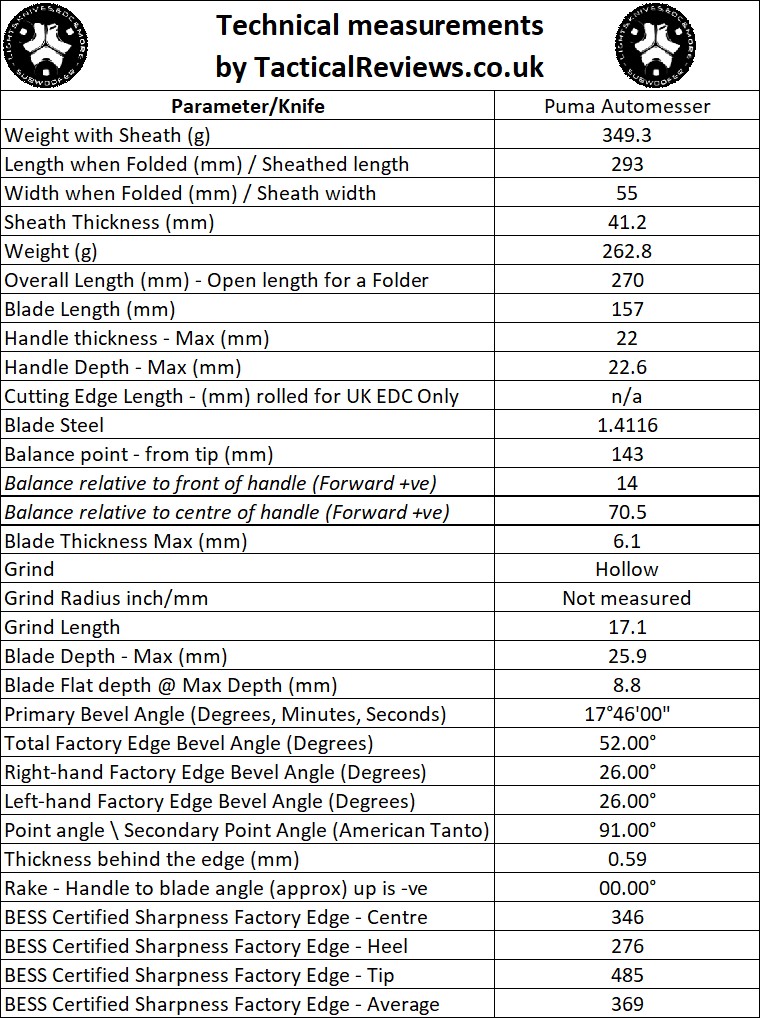
The Factory edge up close:
Followers of Tactical Reviews will know my views on factory edges, but to recap:
Anyone using a knife will need to sharpen it. That first factory edge is just like the first tank of fuel that a new car comes with (or first charge of the battery).
A good factory edge is a ‘nice to have’ but not a ‘make or break’ for a good knife, as you will be putting your own edge onto it soon enough.
The factory edge does however indicate the care a knife maker has put into the final finish.
It is for this reason Tactical Reviews measures factory edge sharpness and specifications, and includes this information in the detailed technical testing.
As a further look at the factory edge, this section has been added to include some high magnification photos of the factory edges.
With all the curves on the Automesser, the factory edge varies quite a bit, so a few more images are included here just to give a better impression of this edge.
What is it like to use?
For a general purpose knife, the Automesser is a great fit. I take XL size gloves, and you can see here there is room between the guard and grip hook for me to also wear gloves (this is quite important – more on that later). Excellent grip provided by the jimping on the thumb ramp, make this super useful for finer work or when you need that extra pressure behind the cutting edge, the edge which is now a plain edge.
You’ll want to take this knife with you, it longs to be out in the woods. For me, with this full plain edge, I’ve now got the power and control where I work a blade most. Here, some seasoned oak is shaved with ease using the prime cutting zone of this hollow ground edge.
With an obvious weight-forward blade, though this broader tip also leans towards skinning tasks, it also gives the blade much more chopping power than another of the same length. Rather than the much softer green wood, I’m testing here on tough pallet wood. The first strike binding slightly, as you would expect with a hollow grind, but chips then start flying and the final strike splitting the board (mainly due to the board fixings not holding securely enough to support the chopping force).
You might notice I am wearing a glove for this cutting test. I found the handle grip hook a little sharp and when chopping, its corner was digging into my little finger, so I went with gloves. Once wearing a glove, the knife remained secure and I was comfortable too. For any hard chopping I would definitely want to wear gloves. Being hand made, the grip hook detail varies slightly and is more pronounced on this example than others I’ve seen.
Before I explain the final gallery, I wanted to mention a minor aspect of the sheath I’m not so keen on; the waisted design. Over time and after more sharpening sessions this is going to ease, but in the example I have, the blade jams once the wide tip reaches the narrowed waist. Particularly after giving the Automesser its first full re-sharpen, I can feel it bite into the welt and maybe even the main sheath itself as the blade bulge passes this narrowed area. The ‘bite’ is what worries me, and I then tend to back off and try again, so making the insertion and removal of the knife not smooth.
With some flattening out of the sheath at this point (as shown below I’m squeezing this area) and general wear, it is going to improve, but I would definitely have preferred a straight shape to the sheath. Perhaps not as elegant looking, but more reliable for dropping the knife back in and taking it out again. Of course this does mean the knife is less likely to fall out if the press stud is not secured, so this might be a plus to other people.
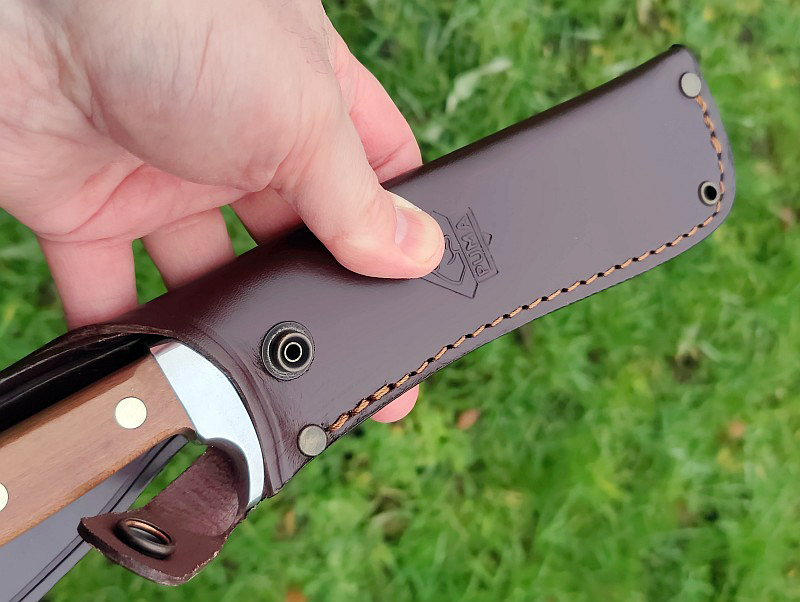
In this last gallery I wanted to show the additional knife retention system Puma include, which is unusual and not often seen. If you want to stabilise the handle when carrying it, or in case you accidentally damage, or cut off the retention strap, which is a danger on any sheath with this type of strap, or the press stud gets worn and no longer holds as securely as it used to, you have a backup option. I would consider this a backup as it can be a bit fiddly to use, but faced with possibly losing the knife, it is a great option.
On the front of the belt loop is a cord loop. You can pass this cord over the handle, twist it and bring it back over the handle, twist it and pass it back over the handle a final time.
Even with the retention strap not done up, the knife can then only come out of the sheath partially.
Puma’s Automesser, now with the option of a full plain edge, has made this much sought after classic blade all the more useful. I would always have been working around the gristle saw, and though this is a good feature for many, for me it always left this beautiful blade a second place – not any more. Classics are classics for good reason, and the Automesser/White Hunter aesthetics stand out along with proven functionality. This optional minor change lifts the usability of this knife to new levels and I can’t wait to carry this more.
Review Summary
The views expressed in this summary table are from the point of view of the reviewer’s personal use. I am not a member of the armed forces and cannot comment on its use beyond a cutting tool or field/hunting knife.
Something that might be a ‘pro’ for one user can be a ‘con’ for another, so the comments are categorised based on my requirements. You should consider all points and if they could be beneficial to you.
_______________________________________________
What doesn’t work so well for me
_______________________________________________
Grip hook ‘bites’ a little when chopping.
Waisted sheath makes sheathing and unsheathing catchy.
Slightly blocky handle.
_______________________________________________
Things I like
_______________________________________________
Timeless classic design.
Traditional leather sheath.
Excellent chopping power in a compact blade.
Blade has been individually hardness checked.
Materials used are steel, aluminium, brass, wood, cotton and leather (no plastic).
Full plain edge now available (from 2024).
Tried-and-tested design dating back to 1956.
Secondary retention strap/cord.
Review Videos
Starting with a short format sixty second review:
Onto a full video review covering many more details:
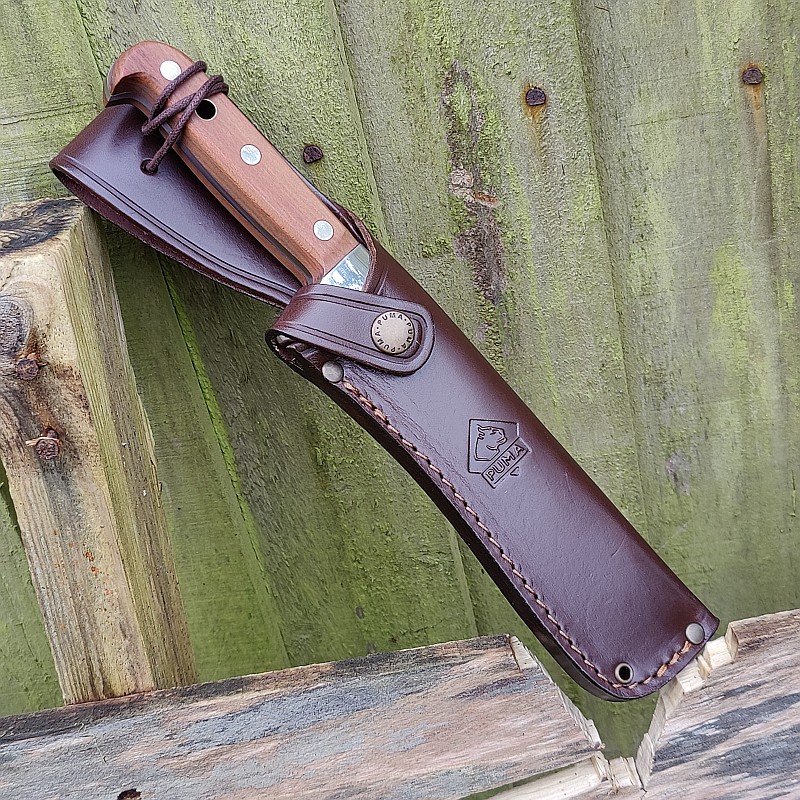
Discussing the Review:
Something new – will it work? A Tactical Reviews Subreddit.
TacticalReviewsChat on Reddit
Please visit there and start/join the conversation.


